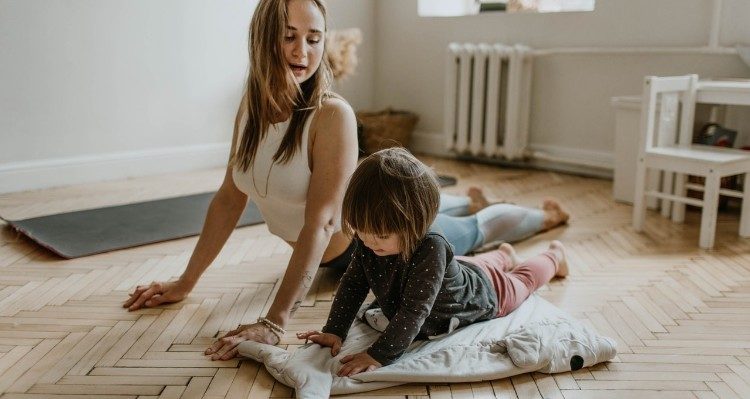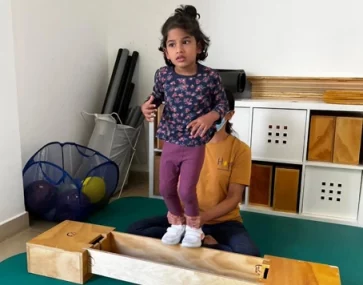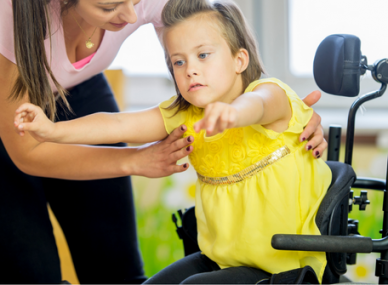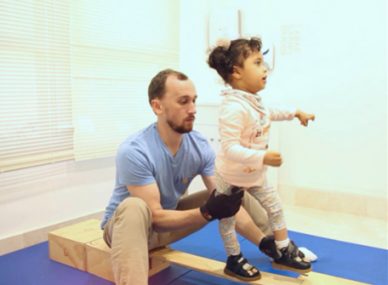Core Stability Training (CST) is a strength training initially in sports and then gradually applied to rehabilitation medicine. It refers to the ability to control the muscle tissue around the lumbar pelvic cavity in order to stabilize the spine and transfer power from the trunk to the limbs. It has been confirmed that CST has a positive influence on dynamic sitting and standing balance, trunk control, and gait. The strength of trunk muscles is directly linked to balance.
Fortunately, there are several ways to stimulate these muscles and in many of these ways we don’t need any extra material, just our own body.
To organize the exercises in a more simplified way, I will divide them into 3 groups: Beginner, Intermediate and Advanced.
Beginner:
- To strengthen the back region, place the child on his/her stomach, stimulating the trunk extension. It can be done on the ground, on a large ball or on a pillow to help extend the back and arms.
- Whilst on his/her back, encourage the child to hold up both feet together. If the child finds this easy, you can ask him/her to propel themselves sideways or back and forth.
Intermediate:
- Roll several times. To increase the difficulty, ask the child not to use their arms to roll.
- Play while kneeling. Place some activity on a low table or sofa and encourage the child to play while kneeling.
- Sit the child on your legs and hold him/her as low as possible: trunk, pelvis or legs. Move the child in all directions, as if you want to drop him/her over. While moving the child, change the speed of the movements depending on the child’s response. The goal is to make him/her remain seated on your lap.
Advanced:
- Crab walking: The child on his/her back should push up with arms and legs; after, he/she should walk only with the support of his/her hands and feet. The movement can be forward or backward.
- Wheelbarrow: Hold the child by the thighs and ask him/her to walk with the hands on the floor. If it is easy, you can hold the child by the knees or ankles.
- Plank: With the belly down, ask the child to raise the body, keeping the position only with the hands and feet on the floor. Observe if the child is in a straight posture, without arching the back.
- Sitting in a chair: The child must remove both feet from the floor. They can rest their hands on the chair. To make it more difficult, ask him/her to put the hands in the air or raise his/her legs higher.
I hope you enjoy these activities and that they can be useful for improving your son or daughter’s muscle strength and motor coordination. Try to create some goals with the child and always do the activities playful, respecting the limit of each one.
Any questions, send us a message.
Thank you,
Hope Team






